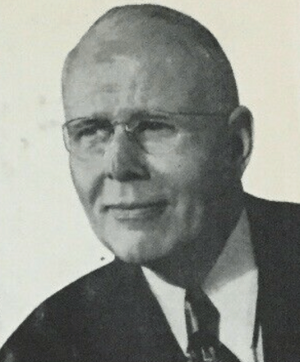Walter C. Alvarez facts for kids
Quick facts for kids
Walter C. Alvarez
|
|
|---|---|
 |
|
| Born |
Walter Clement Álvarez
July 22, 1884 |
| Died | June 18, 1978 (aged 93) San Francisco, California
|
| Nationality | American |
| Alma mater | Cooper Medical College |
| Occupation | physician |
| Years active | 1913-1925 |
| Spouse(s) |
Harriet Skidmore Smythe
(m. 1907; died 1973) |
| Children | Gladys, Luis, Robert and Bernice |
| Parent(s) | Luis F. Alvarez |
| Relatives | Mabel Alvarez |
Walter Clement Alvarez (born July 22, 1884, died June 18, 1978) was an American doctor. He was known for writing many books about medicine.
About Walter C. Alvarez
Walter Clement Alvarez was born in San Francisco, California. He spent his childhood in Hawaii. His father was also a doctor there. Walter studied medicine at Stanford University. He started his own medical practice in 1910.
His Medical Career
From 1913 to 1925, Dr. Alvarez worked as an internal medicine doctor in San Francisco. He also did research at the University of California, Berkeley. In 1934, he became a Professor of Medicine at the University of Minnesota. He later became a special consultant in medicine.
Dr. Alvarez was the first to study the electric activity of the stomach. This led to a new way of diagnosing stomach problems. This field is called electrogastrography.
After he retired in 1951, Dr. Alvarez started writing a medical column. This column appeared in many newspapers across North America. The Walter C. Alvarez Memorial Award is named after him. This award honors people who are excellent at explaining health topics to the public.
Two medical terms are named after him:
- Alvarez' syndrome: This is when someone feels bloated in their stomach, but there isn't extra gas.
- Alvarez-waves: These are painless contractions of the uterus that happen during pregnancy.
His Family Connections
Walter's father was Luis F. Alvarez. He was also a doctor who worked in California and Hawaii. His father created a better way to diagnose a type of leprosy. Walter's sister was Mabel Alvarez, a famous artist and oil painter from California.
Walter Alvarez was married to Harriet Skidmore Smythe. They had four children: Gladys, Luis, Robert, and Bernice. His son, Luis Walter Alvarez, became a physicist and won a Nobel Prize. His grandson, Walter Alvarez, is a Professor of Geology at the University of California, Berkeley.
Walter Clement Alvarez passed away in California in 1978. His personal papers are kept in the Lane's Archives and Special Collections.

